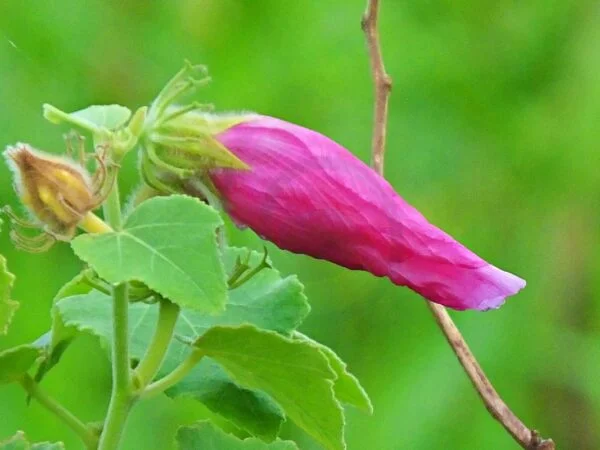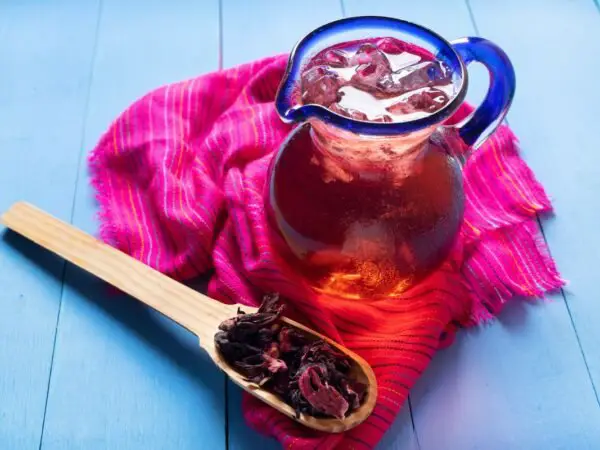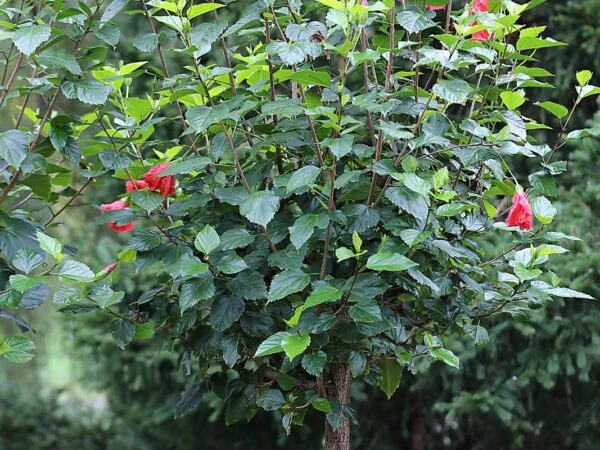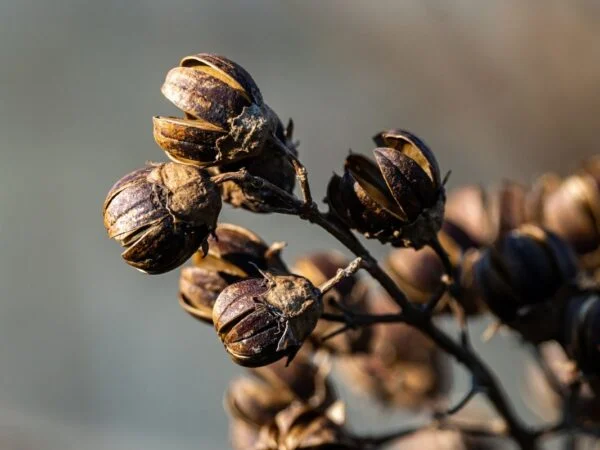
Ever wondered if a bush could resemble a lilac? The answer might surprise you.
Key Takeaways
- Identifying Lilac Lookalikes: Learn to distinguish between lilacs and similar bushes to avoid confusion in your garden.
- Taxonomy of Lilac Mimics: Understand the different species, hybrids, and cultivars that resemble lilacs to make informed planting decisions in landscaping.
- Cultivation Tips: Apply appropriate care practices to ensure the healthy growth of both lilacs and their lookalikes.
- Enhancing Garden Aesthetics: Utilize the unique features of lilac lookalikes and lilacs to create visually appealing garden landscapes.
- Fragrance in the Garden: Appreciate the scents emitted by both lilacs and their mimicking bushes to enhance sensory experiences in your garden.
- Environmental Benefits: Recognize the ecological advantages of planting both lilacs and their resemblant bushes for a more sustainable garden environment.
Identifying Lilac Lookalikes
Visual Similarities
Lilac bushes and crape myrtles share key visual characteristics that can lead to confusion. Both plants boast clusters of small, delicate flowers that grow in dense, showy bunches. The colors of crape myrtle flowers closely resemble the pastel hues of lilac blooms, ranging from soft purples to pinks. When in full bloom, crape myrtles present an appearance that can easily be mistaken for lilac bushes at a glance.
- Clusters of small, delicate flowers
- Pastel hues resembling lilac blooms
- Overall appearance similar to lilac bushes
Aromatic Comparisons
While both crape myrtle and lilac plants are known for their pleasant scents, there are distinct differences in the fragrances they emit. Crape myrtle flowers exude a sweet, mild fragrance that varies depending on the cultivar. In contrast, lilac blossoms offer a stronger, more intense aroma that is often described as heady and intoxicating. The aromatic qualities of crape myrtles set them apart from lilac bushes due to their lighter and less overpowering scents.
- Crape myrtle emits sweet, mild fragrance
- Lilac offers strong, intense aroma
- Crape myrtle's lighter scent distinguishes it from lilacs
Taxonomy of Lilac Mimics
Classification Basics
Crape myrtle species, particularly Lagerstroemia indica, belong to the taxonomical group known for their vibrant blooms. Through hybridization, variations like L. indica × L. fauriei emerge, showcasing diverse colors and sizes. These hybrids enrich the botanical world with their unique characteristics and visual appeal.
The intricate process of hybridization gives rise to a wide array of crape myrtle varieties, each distinct in its features and growth patterns. Lagerstroemia indica stands out as a common species due to its adaptability and striking flowers. Its classification underscores the beauty and versatility that crape myrtles bring to gardens and landscapes.
Botanically, crape myrtles boast distinctive traits such as peeling bark, colorful blossoms, and graceful foliage. These features contribute to the allure of these plants within their taxonomical framework, showcasing nature's creativity through varied shapes and sizes.
Common Species
Lagerstroemia indica reigns as a popular choice among gardeners and landscapers for its resilience and aesthetic appeal. Its widespread presence in horticulture highlights its adaptability to various climates and soil conditions. The plant's ability to thrive in diverse environments makes it a sought-after option for adding color and charm to outdoor spaces.
In landscaping, different crape myrtle varieties offer unique characteristics ranging from flower color to growth habits. Varieties like 'Natchez,' 'Muskogee,' and 'Tuscarora' stand out for their distinct features that cater to different preferences in garden design. By comparing and contrasting these common species, enthusiasts can select the ideal crape myrtle cultivar based on their desired attributes.
Lagerstroemia Characteristics
Unique Features
Crape myrtle bark sheds year-round, revealing a smooth, mottled surface underneath, adding visual interest to the tree. The crêpe-like texture of crape myrtle flowers gives them a delicate and unique appearance. These flowers have thin petals that resemble crêpe paper, creating a soft and elegant aesthetic in gardens.
The fruiting process of crape myrtle is intriguing; it forms small capsules that contain numerous tiny seeds. As the capsules mature, they split open, releasing the seeds to propagate new plants. This process not only ensures the survival of the species but also adds an element of interest to the tree's overall appearance.
Species Diversity
Crape myrtle flowers showcase a wide array of colors ranging from vibrant pinks and reds to softer shades like white and lavender. This diversity allows gardeners to choose varieties that complement their landscape design preferences. The different crape myrtle species exhibit varying growth habits, with some growing as small shrubs while others develop into larger trees. Each species also boasts unique flower characteristics, such as size, shape, and color variations.
The diversity among crape myrtle species extends beyond just appearances; it includes differences in cold hardiness, disease resistance, and adaptability to various soil types. Some species are more suitable for specific climates or soil conditions than others, making it essential for gardeners to select the right type for their location. By understanding these distinctions, enthusiasts can cultivate a diverse range of crape myrtles in their gardens.
Ecology of Lookalike Bushes
Habitat Preferences
Crape myrtles thrive in warmer southern climates, preferring temperatures that don't drop too low during winter. They enjoy full sunlight exposure for at least six hours a day, aiding in robust flowering and growth. Well-drained soil is crucial for crape myrtles, preventing root rot and ensuring optimal nutrient absorption.
Biodiversity Impact
Crape myrtles can impact biodiversity by providing food and shelter for various insects and birds. Their presence in subtropical and tropical regions enhances the ecosystem's diversity.
Cultivation Tips
Planting Guidelines
To plant crape myrtles, dig a hole twice as wide and just as deep as the root ball. Loosen the soil around the hole for better root growth. Place the plant in the hole, ensuring it sits at ground level. Fill the hole with soil and water thoroughly.
For different soil types, ensure well-draining soil to prevent waterlogging. Sandy loam soil is ideal for crape myrtles, promoting healthy growth. Clay soils can be amended with organic matter to improve drainage and nutrient retention.
Proper spacing is crucial; ensure at least 6 feet between plants for good air circulation. Crape myrtles thrive in full sunlight, so choose a spot that receives 6-8 hours of direct sunlight daily for optimal growth.
Care and Maintenance
Maintain healthy crape myrtle plants by regularly watering during dry spells to keep the soil moist but not waterlogged. Fertilize in early spring with a balanced fertilizer to promote robust flowering and growth.
Pruning is essential to remove dead or diseased branches and encourage new growth. Prune in late winter or early spring before new growth emerges. Cut back any crossing branches or suckers to maintain a tidy appearance.
Enhance flowering by deadheading spent blooms, allowing energy to focus on new flower production. Mulch around the base of the plant to retain moisture and suppress weeds, aiding in overall plant health.
Crapemyrtle Overview
Southern Charm
Crape myrtles hold cultural significance in southern regions like the United States, where they are cherished for their vibrant blooms and easy maintenance. These trees contribute to the charm of southern landscapes with their colorful flowers that bloom throughout the summer months. Historically, crape myrtles have been an integral part of southern gardening traditions, adding a touch of elegance to gardens and streets.
- Pros:
- Enhances the aesthetic appeal of landscapes
- Requires minimal maintenance
- Drought-tolerant nature
Growth Habits
These trees exhibit fast-growing habits, quickly reaching their mature height within a few years. Gardeners can easily shape and train crape myrtles to fit specific landscaping needs, whether as a tree or shrub. The versatility of crape myrtle growth patterns makes them ideal for hedges, borders, or standalone features in gardens.
- Crape myrtles grow rapidly, reaching full maturity in a short period.
- Their flexible branches can be pruned to create various shapes and sizes.
- Ideal for both formal and informal garden designs due to their adaptability.
Enhancing Garden Aesthetics
Design Ideas
Crape myrtles, with their vibrant blooms, can enhance garden aesthetics through various design ideas. Consider creating a stunning focal point by planting crape myrtles in the center of a flower bed. This arrangement adds color and height to the landscape.
For a more subtle touch, use crape myrtles as accents along pathways or borders. Their delicate flowers and graceful branches can create a charming atmosphere in your garden. Integrate crape myrtles into outdoor spaces by planting them in decorative containers on patios or near seating areas for visual appeal.
Companion Plants
When selecting companion plants for crape myrtles, choose species that complement their beauty. Consider planting low-growing shrubs like azaleas or hydrangeas around crape myrtles to create a lush and colorful garden bed. Pairing ornamental grasses with crape myrtles can add texture and movement to the landscape.
To achieve a harmonious landscape, combine crape myrtles with plants that bloom at different times throughout the year. For example, plant spring-blooming bulbs like daffodils near crape myrtles to ensure continuous blooms in your garden. Mixing evergreen plants with crape myrtles can provide year-round interest and structure to your outdoor space.
Fragrance in the Garden
Scented varieties of crape myrtles add a delightful element to garden landscapes. These cultivars offer fragrant blooms that enhance the overall sensory experience in outdoor spaces. Different scented crape myrtle varieties produce unique scents, ranging from sweet to spicy notes, captivating both gardeners and visitors alike.
Growing scented crape myrtles in gardens introduces a pleasing aroma, creating a welcoming atmosphere for anyone strolling through the garden. The fragrance adds an extra dimension to the visual beauty of these flowers, making them a popular choice for those seeking a multi-sensory garden experience.
Environmental Benefits
Erosion Control
Crape myrtles play a crucial role in preventing soil erosion in landscaping. Their extensive root systems stabilize soil on slopes and embankments effectively. By planting crape myrtles strategically, you can create a natural barrier against erosion.
The root systems of crape myrtles act as anchors, holding the soil in place during heavy rains or winds. This helps to prevent runoff and maintain the integrity of the landscape. When selecting crape myrtles for erosion control, opt for varieties with robust root structures.
- Plant crape myrtles on slopes and hillsides to maximize their erosion control benefits.
- Ensure proper spacing between plants to allow for optimal root development.
- Consider using a mix of different crape myrtle varieties to enhance stability and aesthetics.
Air Quality Improvement
Crape myrtles are not just visually appealing; they also contribute to improving air quality in urban and suburban areas. Through their foliage, these trees help filter out pollutants and particulate matter from the air.
The leaves of crape myrtles trap dust particles and absorb harmful gases, thereby purifying the air around them. By planting crape myrtles in urban settings, you can help reduce pollution levels and create a healthier environment for residents.
- Choose crape myrtle species known for their air-purifying properties.
- Position crape myrtles strategically near roads or industrial areas to maximize their impact on air quality.
- Regularly maintain the trees by pruning dead branches and leaves to ensure optimal air purification.
Closing Thoughts
After exploring the various bushes that resemble lilacs, you now possess a deeper understanding of their taxonomy, characteristics, and ecological roles. By incorporating these lookalikes like Lagerstroemia into your garden, you enhance its aesthetics and fragrance while reaping environmental benefits. Cultivating these plants not only adds beauty but also contributes to biodiversity and sustainability. As you continue to nurture your garden, consider the impact of these choices on the ecosystem around you.
Take action today by planting a lilac mimic in your garden and experiencing firsthand the beauty and benefits it brings. Share your newfound knowledge with fellow gardening enthusiasts to spread awareness about these remarkable bushes and their significance in creating vibrant, eco-friendly landscapes.
Frequently Asked Questions
Is it easy to distinguish between lilac and its lookalikes?
Yes, identifying lilac lookalikes can be challenging due to similarities in appearance. Pay attention to specific characteristics like leaf shape, flower color, and overall growth habit to differentiate them accurately.
How can I enhance the aesthetics of my garden with lilac and its mimics?
To enhance your garden aesthetics, consider planting a variety of lilacs and their lookalikes with different bloom times, colors, and sizes. This diverse selection will ensure a continuous display of beautiful flowers throughout the season.
What are the environmental benefits of cultivating lilac bushes in my garden?
Lilac bushes offer various environmental benefits such as attracting pollinators like bees and butterflies, improving air quality by absorbing pollutants, and providing habitat for beneficial insects. Their fragrance adds a pleasant ambiance to outdoor spaces.
Are there specific cultivation tips I should follow when growing lilac bushes?
When cultivating lilac bushes, ensure they receive full sun exposure, well-drained soil, and regular pruning to promote healthy growth and abundant flowering. Mulching around the base helps retain moisture and suppresses weed growth for optimal plant health.
What distinguishes Lagerstroemia (Crapemyrtle) from true lilacs?
Lagerstroemia, commonly known as Crapemyrtle, differs from true lilacs in terms of flower structure, growth habits, and blooming patterns. While both plants offer stunning blooms, Crapemyrtles exhibit unique bark textures and vibrant fall foliage that set them apart from traditional lilacs.
Image Source: Paid image from CANVA





